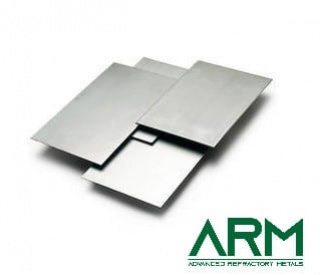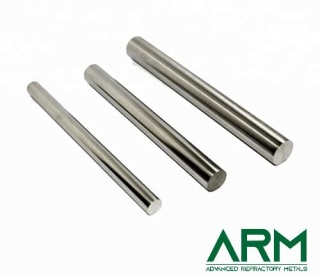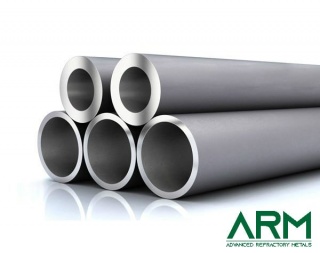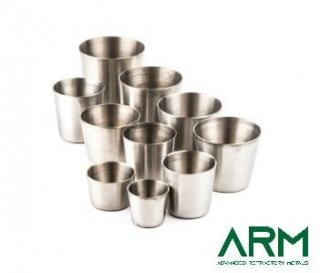How Was Molybdenum Sheet Developed and Utilized?
27.09.2019.Bright molybdenum sheet is dark brown, and it appears silver-gray metal luster if washed by alkali. The density of molybdenum sheet is basically close to the theoretical density of molybdenum after rolling and processing with the deformation reaching more than 60%. Therefore, molybdenum sheet has high strength, uniform internal structure and excellent resistance to high temperature creep, which is widely used in the production of sapphire crystal growth furnace reflection screen, cover plate, vacuum furnace reflection screen, hair belt, connectors, plasma coating sputtering target material, high temperature resistant boat dishes and other products. Molybdenum sheet is mainly used in the following industries.
Steel industry
Molybdenum is mainly used in the iron and steel industry, most of which are directly used for steelmaking or cast iron after pressing the industrial molybdenum oxide block, and a small part of which is smelted into ferromolybdenum and then used for steelmaking. Adding molybdenum to stainless steel can improve the corrosion resistance of steel while adding molybdenum to cast iron can improve the strength and wear resistance of iron.
Aerospace industry
Ni-based superalloy containing 18% molybdenum has the characteristics of high melting point, low density, and low thermal expansion coefficient, and is used for manufacturing various high-temperature components of aviation and aerospace. Molybdenum disulfide is an important lubricant used in aerospace and mechanical industries.
Electron industry
Molybdenum sheet is widely used in electronic devices such as electron tubes, transistors, and rectifiers.
Chemical industry
Molybdenum trioxide and molybdate are excellent catalysts in the chemical and petroleum industries.
Catalytic industry
Due to its unique sulfur resistance, molybdenum disulfide can catalyze the hydrogenation of carbon monoxide to produce alcohols under certain conditions. It is a promising chemical catalyst for C1.
Pharmaceuticals industry
Molybdenum is a component of many enzymes, and the lack of molybdenum can lead to dental caries, kidney stones, keshan disease, Kashin disease, esophageal cancer, and other diseases. It is mainly used in patients with chronic dependence on intravenous hypertrophy.
Advanced Refractory Metals (ARM) supplies people with high-quality refractory metals all over the world. Please visit https://www.refractorymetal.org for more information.
komentiraj (0) * ispiši * #
How Are Molybdenum Rods Classified?
Molybdenum has high-temperature strength, good conduction, thermal conductivity, and low thermal expansion coefficient, so the molybdenum rod products are widely used in the high-temperature furnace as a heating body, structural parts, etc. Molybdenum rods are often used in rare earth smelting and glass smelting industries. In addition, molybdenum and its alloy bars are also made of various small molybdenum crucibles, molybdenum ion implantation parts, molybdenum electric light source product parts, and molybdenum mold parts.
Molybdenum based alloy is a non-ferrous alloy which is composed of other lanthanum, zirconium, titanium, niobium, and rhenium. Among them, TZM alloy effectively improves the mechanical properties of high temperature and is widely used in the manufacture of high-temperature tools, molds, and various structural parts. The molybdenum lanthanum alloy made from pure molybdenum oxide is also called high-temperature molybdenum in the industry, which effectively improves the recrystallization temperature of molybdenum. It also reduces the deformation of the product within a certain temperature range and improves the service life.
Molybdenum rod and molybdenum alloy bar products have the following kinds.
Sintering molybdenum rods
Molybdenum bars are usually forged to increase density and improve tissue structure. However, there is no forging process for the molybdenum rod or molybdenum block products with a diameter of more than 120 mm and single weight and only sintered products are provided. The surface of the sintered molybdenum rod is silvery gray.
Forging molybdenum rods
The forging of molybdenum bars is commonly referred to as the black molybdenum rod because of the presence of a layer of oxide on its surface. The forging of the molybdenum rod surface allows for a slight oxidation film and hammer marks. The density and structure of the forged molybdenum rod are directly related to the deformation of the molybdenum bar during forging.
Rotary swaging molybdenum rod
The rotary forging molybdenum rod is also called black molybdenum rod. It is usually forged to a certain diameter and is processed through a rotary forging machine.
Polished molybdenum bars
Molybdenum bars and TZM bars and high-temperature molybdenum bars are used for the implantation of ion implantation parts as well as the blanks for the manufacture of high-temperature tools, molds, and various structural parts. For the purpose of use, the production of molybdenum bars has higher requirements on the physical properties of materials such as density, homogeneity and mechanical strength. Therefore, the requirement of the forging process is beyond the requirement of ordinary die forging.
Molybdenum tubes
Molybdenum tubes are used in a high-temperature environment for air conduction or liquid conduction, and it is also used in thermocouple sleeve. Molybdenum tube is made of forged molybdenum rod by machining. For a molybdenum tube with a length of more than 100 mm, the inner diameter is usually more than 8 mm.
Molybdenum electrode rods
Molybdenum electrode is made from molybdenum rod and mainly used in glass melting and rare earth smelting industry.
Advanced Refractory Metals (ARM) supplies people with high-quality refractory metals all over the world. Please visit https://www.refractorymetal.org for more information.
komentiraj (0) * ispiši * #
What Are the Uses of Machining Zirconium Products?
20.09.2019.Zirconium is a rare metal with amazing corrosion resistance, high melting point, high hardness, and strength. It is widely used in aerospace, military, nuclear reaction, and atomic energy fields. The melting point of zirconium is above 1800 degrees, and the melting point of zirconium dioxide is more than 2700 degrees. Therefore, zirconium is an aerospace material, and its performance in various aspects is much superior to that of titanium.
Metal zirconium is used almost exclusively as a cladding for uranium fuel components in nuclear reactors, as well as for the manufacture of photographic flash lamps, as well as corrosion-resistant containers and pipes, particularly resistant to hydrochloric acid and sulfuric acid.
Zirconium is an important alloying element of magnesium alloys, which can improve the tensile strength and processing properties of magnesium. Zirconium is also a modifier of aluminum-magnesium alloys that refines grains.
Zirconium can absorb a large number of gases such as oxygen, hydrogen, and ammonia when heated. It is an ideal getter. For example, zirconium powder is used as a deaerator in the electron tube, while zirconium wire and zirconium sheet are used as grid support and anode support. Zirconium powder can be burned in the air and can detonate detonators and or drugs. Due to its strength under high temperature and excellent corrosion resistance (especially for acetate acid), zirconium pipes and zirconium pipe fittings are ideal for fuel rods in nuclear reactors.
From the perspective of military industry, as long as one-thousandth of zirconium is added to the steel, the hardness and strength will be amazingly high. Zirconium-containing armor steel, cannon forging steel, stainless steel, and heat-resistant steel are important materials for the manufacture of armored vehicles, tanks, cannons, and bulletproof panels.
From the point of view of atomic energy and nuclear energy, zirconium has outstanding nuclear energy and is an indispensable material for the development of atomic energy industry. Large-scale nuclear power plants generally use zirconium. If they use nuclear power to generate electricity, every million kilowatts of power generation capacity will consume 20 to 25 tons of metal zirconium a year.
Advanced Refractory Metals is a leading supplier and manufacturer of a wide variety of zirconium products, including zirconium pipes, zirconium powder, zirconium rings, etc. Please visit https://www.refractorymetal.org for more information.
komentiraj (0) * ispiši * #
Precautions for the Use of Welded Zirconium Crucible
The raw materials for the production of the crucible can be summarized into three types: one is crystalline natural graphite, the other is plastic refractory clay, and the third is calcined hard kaolin skeleton clinker. Since 2008, high-temperature resistant synthetic materials such as silicon carbide, alumina silicon carbide, and ferrosilicon have been used as skeleton clinker. This clinker has a significant effect on improving the quality of crucible products, enhancing its density and mechanical strength.
Zirconium crucible is an important part of the smelting furnace. It is the space for melting and refining metal liquids and is the basis for ensuring smooth smelting. Zirconium crucible has many types and specifications. It is not limited by production scale, batch size, and smelting material type. It can be arbitrarily selected, has strong applicability, and can guarantee the purity of the smelted material. The following are the precautions for the use of zirconium crucible.
* After use, place it in a dry place, avoid rainwater intrusion; slowly bake to 500 degrees Celsius before use;
* The material should be added according to the volume of the crucible, and the extrusion should not be too tight, so as to prevent the metal from undergoing thermal expansion and cracking.
* When removing the molten metal, it is best to use a spoon to pry it out. Try not to use a caliper. If a caliper or other tool is used, it should conform to the shape of the crucible to avoid excessive local force and shorten the service life.
* The service life of the crucible is related to the usage. The strong oxidizing flame should be prevented from being directly sprayed onto the crucible, and the niobium raw material can be oxidized for a short life.
Advanced Refractory Metals is a leading zirconium crucible supplier with competitive price and great delivery time. Customization is available by your request. Please visit https://www.refractorymetal.org for more information.
komentiraj (0) * ispiši * #




